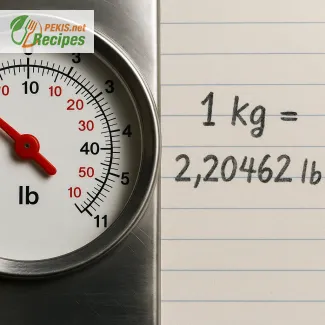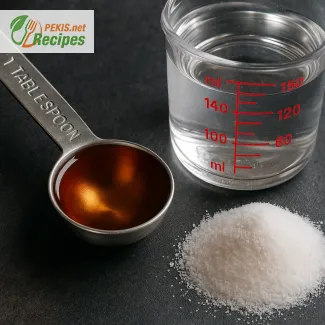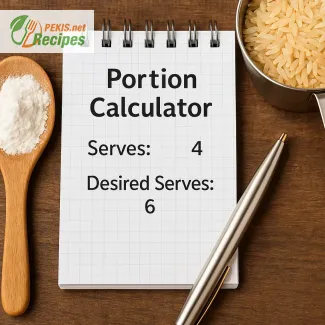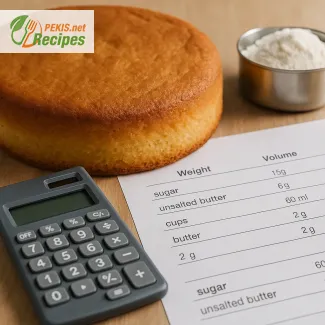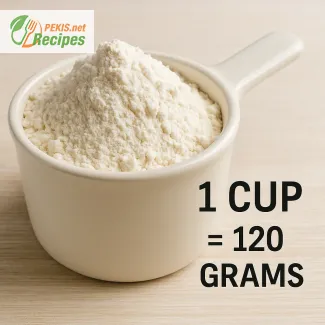
How Many Grams Are in 1 Cup? Mastering Common Kitchen Conversions
Understanding Cup-to-Gram Conversion for Everyday Cooking
Converting 1 cup to grams may seem simple at first glance, but this everyday kitchen task is often misunderstood, especially by those navigating recipes from different regions. Whether you're a home baker, a culinary student, or simply someone trying out an international dish, knowing how to switch from volume (cups) to weight (grams) is essential for consistent results. This guide explains everything you need to know about converting 1 cup to grams, tailored specifically for real-life cooking situations.
Why cup-to-gram conversion isn't universal
One of the most confusing aspects of converting cups to grams is that the result changes depending on what you're measuring. A cup of all-purpose flour does not weigh the same as a cup of sugar, butter, or milk. That’s because cups measure volume, while grams measure mass. The density of the ingredient plays a key role.
For example:
- 1 cup of all-purpose flour weighs approximately 120 grams
- 1 cup of granulated sugar weighs about 200 grams
- 1 cup of butter weighs around 227 grams
These differences matter, especially in baking, where precision can make or break a recipe.
What affects the gram value of 1 cup?
There are several factors that determine how many grams are in 1 cup of a particular ingredient:
- Ingredient density: Lighter ingredients like flour occupy more space and thus weigh less per cup than dense ingredients like honey or peanut butter.
- Sifting or packing: A cup of flour that's been sifted weighs less than a cup that's been scooped and packed.
- Measurement method: Dipping a cup directly into a flour bag will yield more grams than spooning the flour into the cup.
Because of this, it's always safer to use grams when a recipe provides them—or convert to grams using an accurate reference or kitchen scale.
Most common 1 cup to gram conversions
Though conversions vary, there are some standardized values used by most professional cooks and recipe developers. These include:
- All-purpose flour: 120 g per cup
- Granulated sugar: 200 g per cup
- Brown sugar (packed): 220 g per cup
- Butter: 227 g per cup
- Rolled oats: 90 g per cup
- Milk: 240 g per cup
- Honey: 340 g per cup
These figures are not random; they are based on the average density of the ingredients and are commonly used in professional culinary environments.
Why it’s better to weigh than to measure by volume
One of the best tips for improving your cooking or baking is to switch from volume to weight. Why? Because it's far more accurate. Two people measuring a cup of flour can end up with very different amounts, depending on technique. A digital kitchen scale eliminates this inconsistency. You pour until the number is right. No fluff, no guesswork.
Also, most recipes outside of the United States use grams as the standard. This makes it easier to follow international recipes and replicate them with greater accuracy.
Tools that make conversion easy
If you're often dealing with different measurement systems, it’s worth investing in the right tools. A few essentials include:
- Digital kitchen scale: Preferably with the ability to switch between grams and ounces.
- Conversion chart: Keep a laminated version in your kitchen or stick it to your fridge.
- Measuring cups and spoons: Still useful for volume-based recipes or when following traditional American cookbooks.
Also, consider using a conversion calculator online or as an app, especially when you're dealing with complex or less common ingredients.
Regional differences in “1 cup”
One more thing that often gets overlooked is that 1 cup isn't the same everywhere. Here’s a quick comparison:
- US cup: 240 ml
- UK cup: 250 ml (often interchangeable with Australian cup)
- Metric cup: 250 ml (used in most countries outside the US)
These differences might seem minor, but when precision matters—like in baking—they can influence the final product noticeably.
Best practices when converting cups to grams
If you want your dishes to be as close as possible to the original recipe:
- Know your ingredient: Use a trusted source or database to check how many grams are in 1 cup of that specific ingredient.
- Use a scale: This removes ambiguity, especially when it comes to dry goods like flour, sugar, or cocoa powder.
- Understand the recipe’s origin: A British recipe calling for a cup of flour may refer to 250 ml, not 240 ml, which affects the final weight in grams.
- Avoid eyeballing: The difference between 120 g and 135 g of flour can completely alter the texture of a cake.
What to do when you don’t have a scale
If you're in the middle of cooking and don’t have a kitchen scale nearby, don’t panic. You can still get reasonably close by using standard cup-to-gram approximations. It won’t be as perfect, but for many home-cooked meals, it’ll be good enough.
Here’s a simplified fallback:
- Flour: 1 cup = 120 g
- Sugar: 1 cup = 200 g
- Butter: 1 cup = 227 g
- Milk/water: 1 cup = 240 g
Still, if you cook often, buying a scale is one of the cheapest ways to improve your consistency and results.
Why this matters more than you think
Knowing how to convert 1 cup to grams is not just a technical skill—it’s the gateway to better cooking. It allows you to follow a wider range of recipes, understand your ingredients, and troubleshoot when things go wrong. Whether you're baking a birthday cake or making a classic pasta sauce, using the correct weight ensures your food turns out just the way you want it.
In a world where recipes come from every corner of the internet, the ability to translate measurements accurately is a superpower. Don’t rely on guesswork. Instead, make cup to gram conversion a part of your everyday kitchen knowledge.
